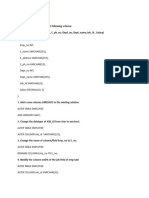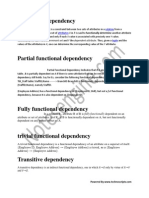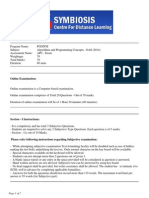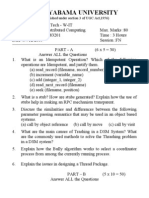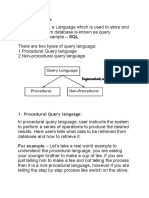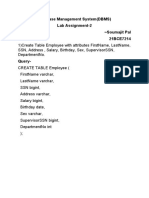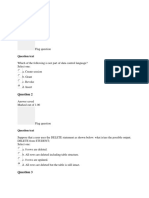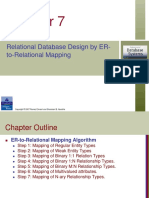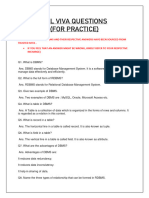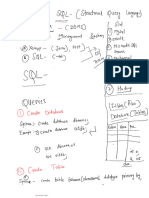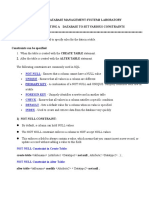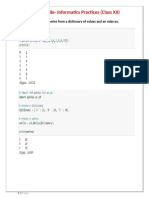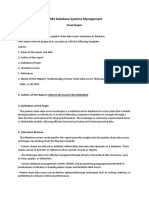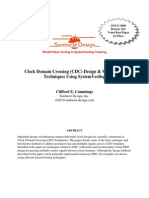0% found this document useful (0 votes)
407 views4 pagesConstraints in Mysql
SQL constraints are used to specify rules for the data in a table. Common constraints include NOT NULL, UNIQUE, PRIMARY KEY, FOREIGN KEY, CHECK, DEFAULT, and INDEX. Constraints can be specified when creating or altering a table to ensure data accuracy and integrity by limiting what values can be inserted and establishing relationships between tables.
Uploaded by
Abhishek MukherjeeCopyright
© © All Rights Reserved
We take content rights seriously. If you suspect this is your content, claim it here.
Available Formats
Download as DOCX, PDF, TXT or read online on Scribd
0% found this document useful (0 votes)
407 views4 pagesConstraints in Mysql
SQL constraints are used to specify rules for the data in a table. Common constraints include NOT NULL, UNIQUE, PRIMARY KEY, FOREIGN KEY, CHECK, DEFAULT, and INDEX. Constraints can be specified when creating or altering a table to ensure data accuracy and integrity by limiting what values can be inserted and establishing relationships between tables.
Uploaded by
Abhishek MukherjeeCopyright
© © All Rights Reserved
We take content rights seriously. If you suspect this is your content, claim it here.
Available Formats
Download as DOCX, PDF, TXT or read online on Scribd
/ 4

